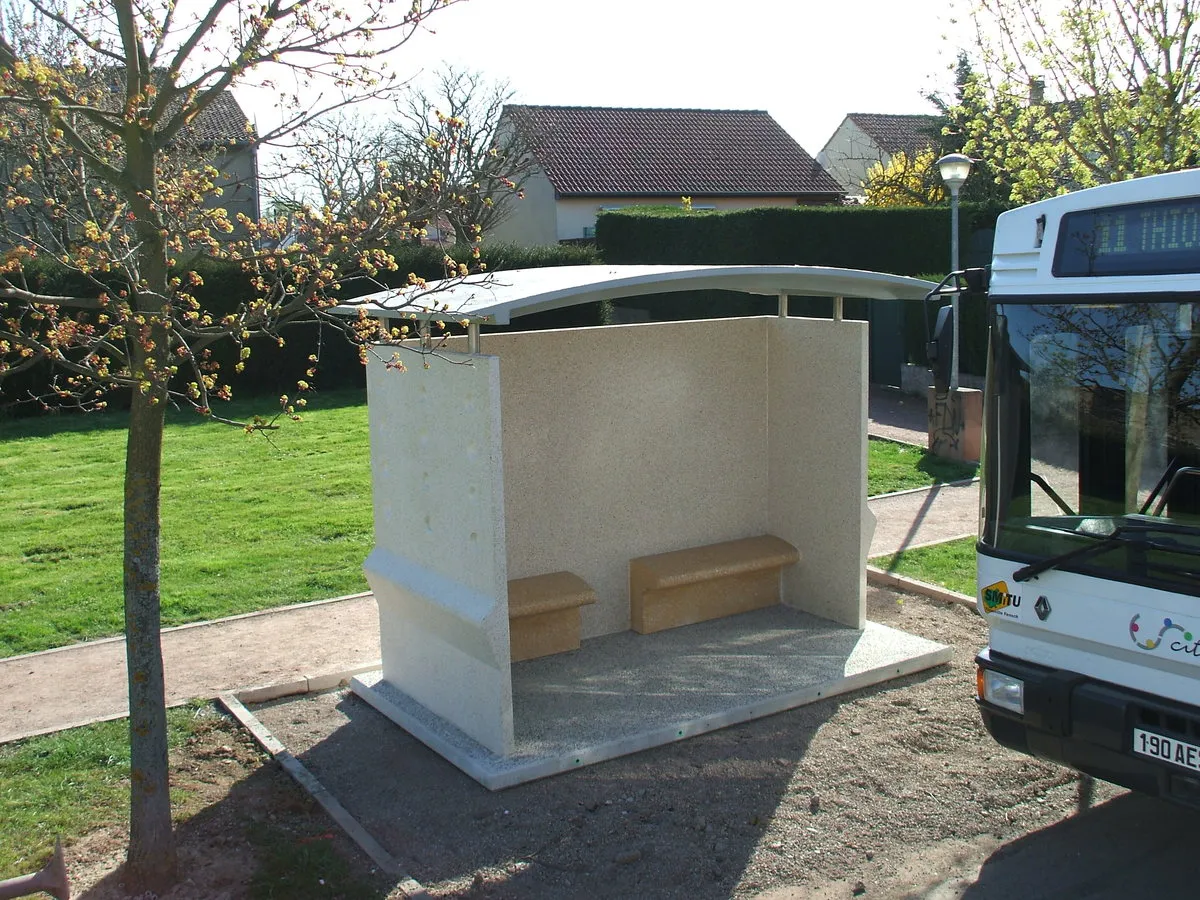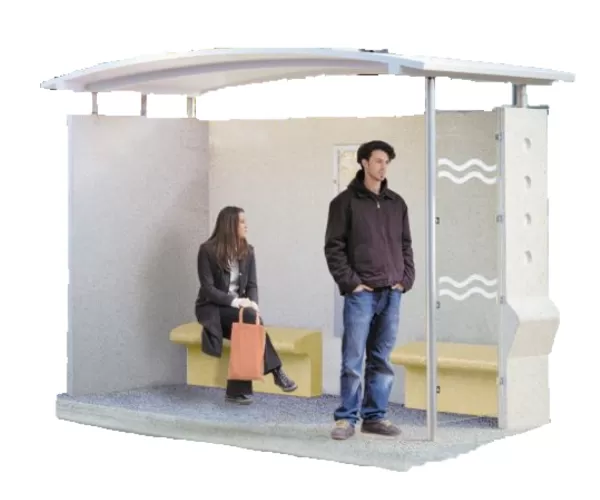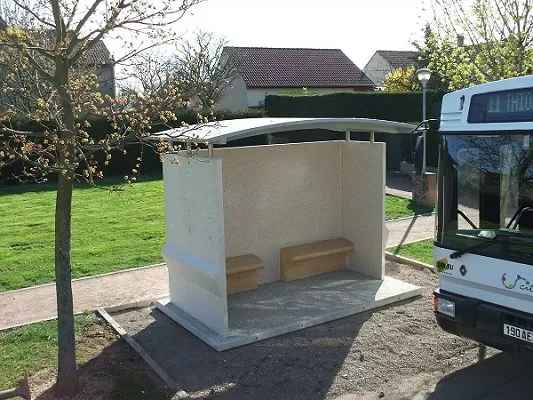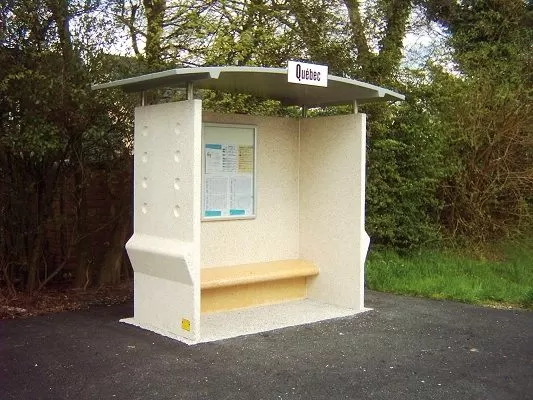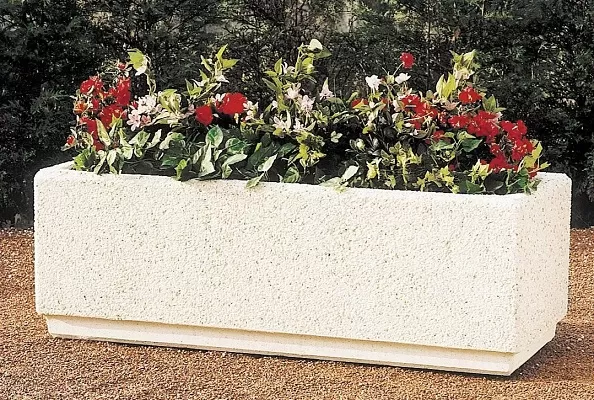Wandering around town one can come across various types of passenger shelter. From schoolchildren waiting for the school bus to adults leaving for work using the city’s bus network, everyone needs a roof to shelter under. These structures can have varying levels of features and come in a wide variety of styles. What exactly are the choices available to local authorities when it comes to bus shelters, and which criteria should they be looking for?
The main functions of a bus shelter
The term “Abribus"" (bus shelter) betrays its function, even though it is a commercial name. Abribus was the name of one of the original bus shelters, and not just any shelter, but one of the first to incorporate advertising panels.
Shelters, bus shelters and passenger shelters in the broadest sense of the term, offer public transport users a space which is protected against the wind, rain and snow. This shelter is neither fully enclosed nor totally open, it provides just enough space to wait for the next arrival.
These shelters can also display useful information for travellers, showing a general map of the network and timetables for individual lines.
Accessories for the Abribus
Passenger shelters indirectly provide information about their surroundings. A visibly neglected shelter is often the sign of a relatively unused line, such as routes for schoolchildren living in more remote villages.
Conversely, bus shelters located in high-traffic areas tend to include a range of complementary features :
- ticket vending machines;
- litter bins;
- ashtrays...
Benches are also a useful addition, as passenger shelters can also offer protection from the elements even if they do not provide a seat.
Installation and maintenance of outdoor bus shelters : who is responsible ?
Certain tasks, such as the provision of timetables and stop locations, fall within the remit of the public transport company. The maintenance of all infrastructure required to run the service therefore falls to the transport authority. But this does not include shelters, as they have no impact on the performance of the service, only on user comfort.
Like any other piece of street furniture, a public bench for example, passenger shelters are usually installed by the local authority, or at least with its permission.
What are the main criteria for bus shelters ?
In order to fulfil its main function, a bus shelter must be clearly visible and easily identifiable. Shelters also feature night lighting to calm fears and enable people to read the information available.
Consistency is another criteria for passenger shelters. Consistency of the equipment and its positioning: shelters designed to accommodate a large number of people do not need to be crammed together. Consistency of placement with the actual bus stop. The shelter does not indicate where the bus stop is, that's the job of the stop sign itself. The bus shelter should ideally be located where the door opens.
To be accessible for people with reduced mobility, a shelter must also meet certain size and location criteria. Stops must be low enough to allows wheelchairs to be moved safely, and the surrounding area must be free from obstacles that could impede passenger flows.
The decree of January 15, 2007 concerning technical requirements for access to roads and public spaces specifies that a minimum distance of 0.90m must be maintained between the border of the passenger shelter and the edge of the stop. This space must also be free from obstacles.
The various styles and designs of passenger shelters
From discreet shelters to unusual designs, from basic to full-featured, how does one choose the right bus shelter design ?
In cities with strong visual identities, passenger shelters can be designed to reflect the aesthetics of the entire area. However, if a bus shelter order must cover several neighbourhoods with different influences, a more discreet appearance would be appropriate for better integration into the urban landscape. Materials, colours, finishes, opaque or transparent sides - these criteria can be used to create unique bus shelters which are adapted to their surroundings.
Francioli, one of the leading companies in outdoor landscaping and street furniture, offers several models of robust, easy-to-maintain shelters. Made in France and compliant with current standards, Francioli’s passenger shelters are fireproof (M1) and come in a variety of styles and designs: solid or glazed, with or without side panels, cassette-type, with or without the base slab...
Anti-graffiti varnish is applied to prevent paint from penetrating the substrate, making maintenance easier and faster in the event of damage. The choice to use concrete for these installations guarantees that they have incomparable resistance to impact and wear due to exposure to UV rays, frost and bad weather. Concrete is a material that is 100% recyclable and inert for the environment.




